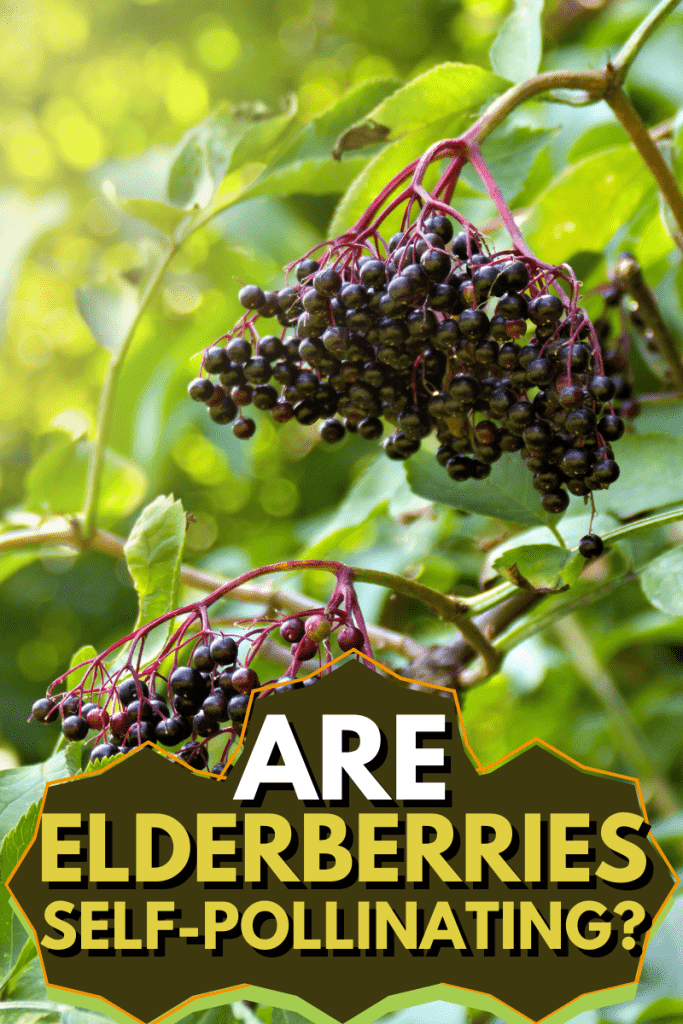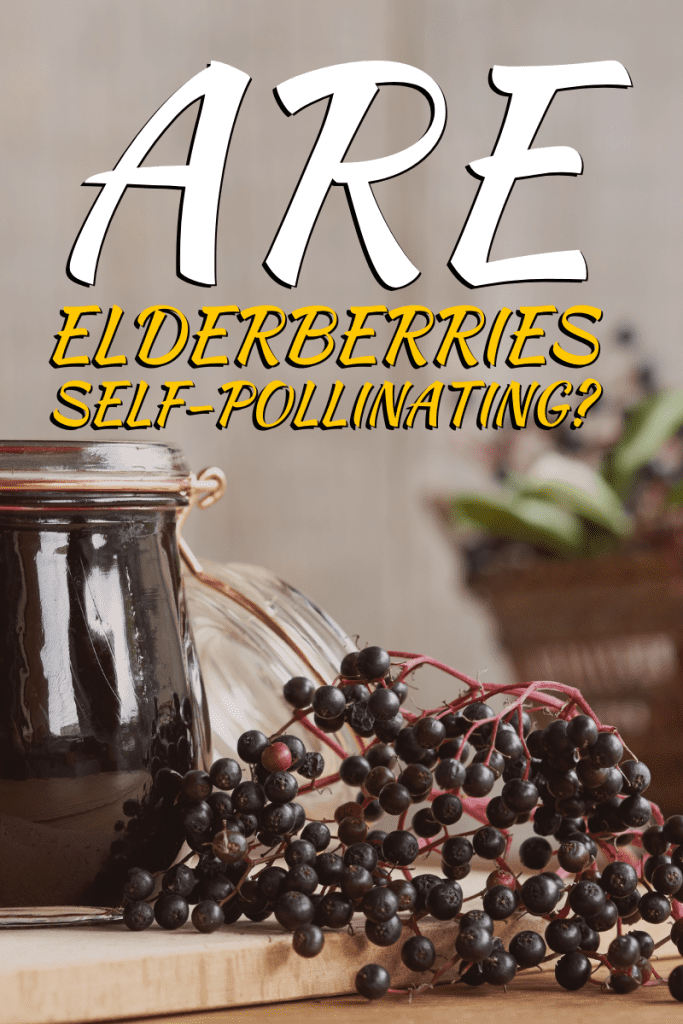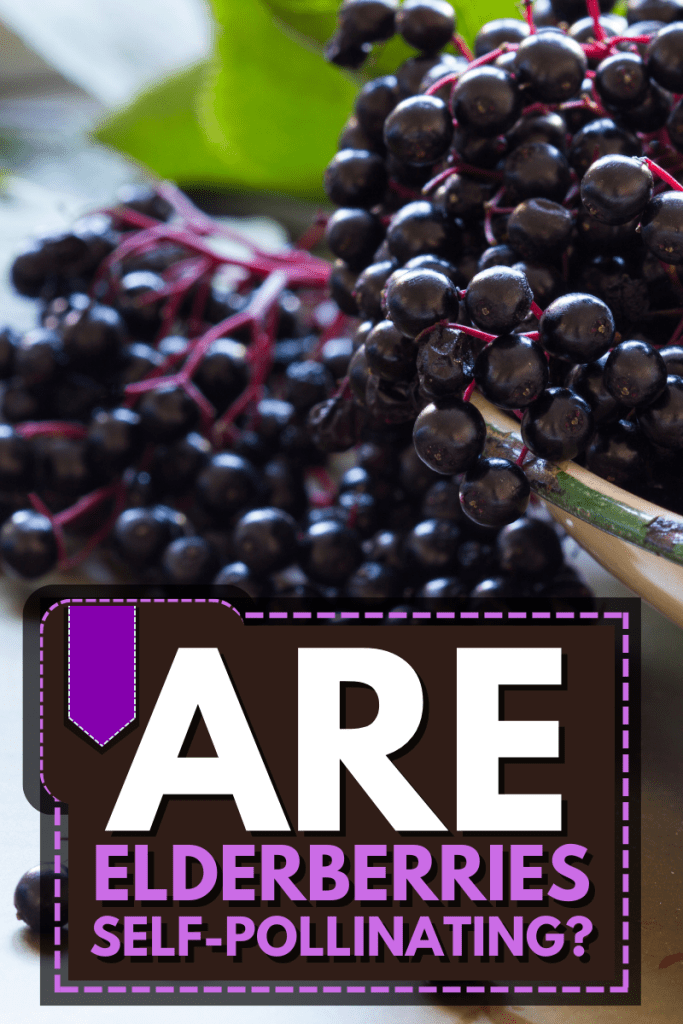The elderberry shrub is a fruit-bearing shrub with berries that are popular for their health benefits and culinary uses. One question that often arises when it comes to growing elderberries is whether or not they are self-pollinating. We gathered helpful information on this topic to provide you with the best answer.
Elderberries are considered partially self-pollinating, which means that they may produce fruit from self-pollination, but their yield and quality may be improved with cross-pollination from another elderberry plant.
This is an important consideration for growers who want to ensure a good crop yield. Read on as we explore the concept of pollination in elderberries and discuss some important facts that growers should keep in mind when cultivating these plants.
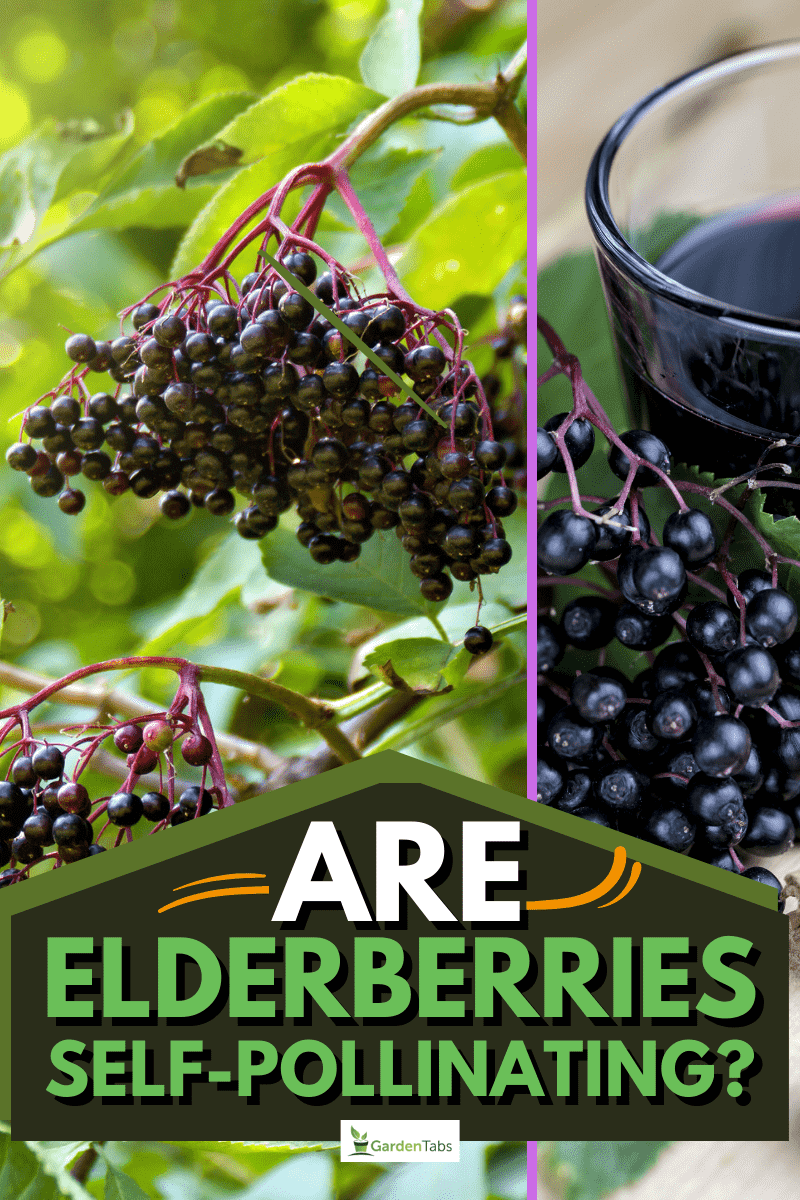
Are Elderberries Self-Pollinating?
It is generally recommended to plant at least two different elderberry varieties near each other for optimal fruit production. Elderberries can be self-pollinating to a certain extent.
Here are some reasons why it's a good idea to plant at least two elderberry bushes:
Cross-Pollination
Cross-pollination between elderberry plants can increase fruit production, improve fruit quality, and promote genetic diversity in the elderberry population. Planting different varieties of elderberry near each other increases the likelihood of cross-pollination.
Higher Yields
Elderberry plants that are cross-pollinated tend to have higher yields than those that are not cross-pollinated. By planting two or more elderberry bushes, you can increase the chances of cross-pollination and achieve higher fruit yields.
Do Elderberries Need Bees to Pollinate?
Elderberries need bees or other insects to pollinate their flowers. Elderberries are insect-pollinated, and bees and other insects are the primary pollinators.
When these insects visit the flowers to collect nectar and pollen, they transfer pollen from the anthers of one flower to the stigma of another flower, leading to fertilization and fruit production.
It is important to attract pollinators to ensure a good fruit set and production. You can attract pollinators by planting other flowering plants nearby that provide nectar and pollen for bees and other insects.
Providing habitat for pollinators in your garden can also help ensure a healthy and diverse ecosystem.
Are Elderberries Easy to Grow?
Elderberries are generally considered easy to grow, as they are hardy and adaptable plants that can thrive in a variety of growing conditions. However, there are a few key factors to keep in mind when growing elderberries:
Soil
Elderberries prefer moist, well-draining soil with a pH between 5.5 and 6.5. They can tolerate a range of soil types, but they do best in loamy, fertile soil. If your soil is too heavy or poorly drained, you may need to amend it with compost or other organic matter.
Sunlight
Elderberries require full sun to produce good fruit yields. Choose a planting location that receives at least 6-8 hours of direct sunlight per day.
Water
Elderberries need regular watering, especially during the first few years of growth. Keep the soil moist but not waterlogged, and water deeply once or twice a week during dry spells.
Pruning
Elderberries benefit from annual pruning to remove dead or damaged wood, promote new growth, and maintain a healthy shape. Pruning should be done in late winter or early spring before new growth begins.
If you keep these factors in mind, elderberries can be relatively easy to grow and provide a bountiful harvest of nutritious and flavorful fruit.
How Many Elderberries Does a Single Plant Produce?
The amount of elderberries that a single plant can produce depends on a variety of factors, such as the age of the plant, growing conditions, pruning practices, and the specific variety of elderberry.
In general, a mature elderberry plant can produce anywhere from 12 to 15 pounds of fruit or more in a single growing season. This can translate to several quarts or even gallons of juice or jam.
Pruning can impact the amount of fruit produced, as removing too much wood can reduce the number of fruiting branches. Ultimately, the number of elderberries that a plant produces can vary widely depending on several factors, but with proper care and maintenance, a healthy elderberry plant can provide a generous harvest of delicious and nutritious fruit.
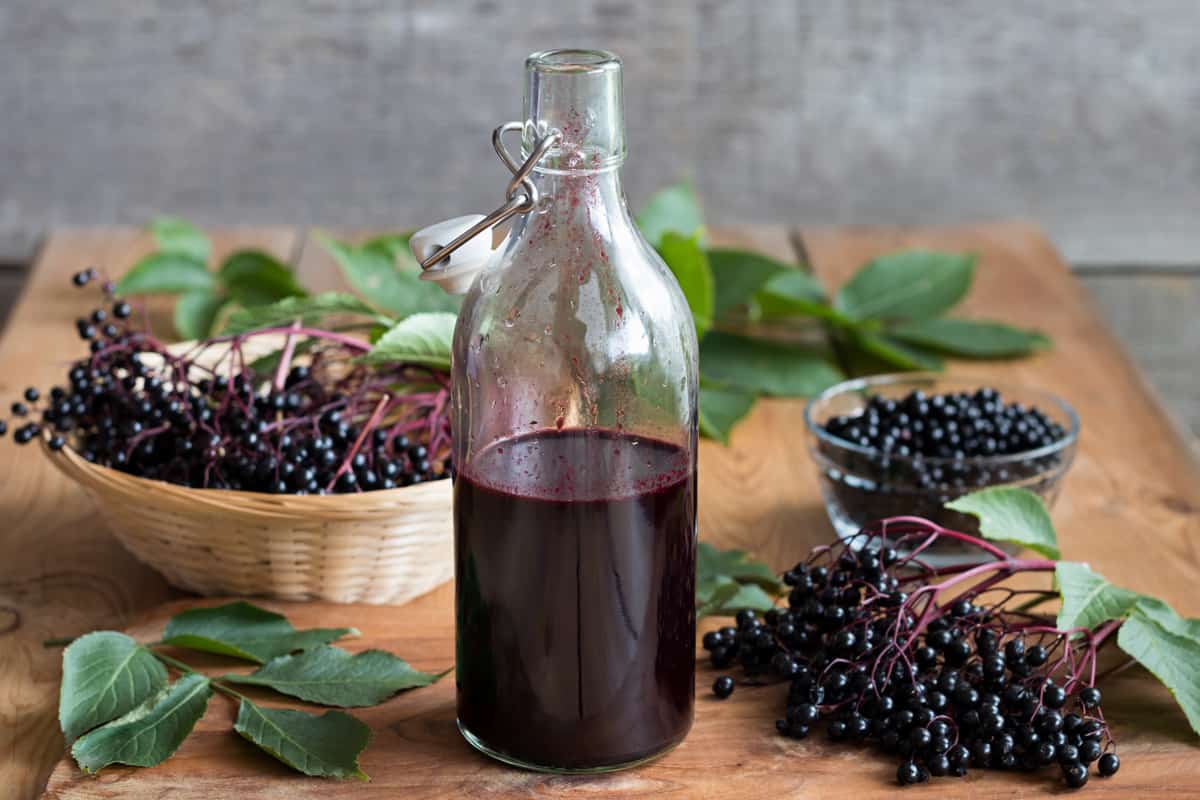
How Many Years Until Elderberries Produce Fruit?
Elderberry plants typically start producing fruit after their second or third year of growth, although it can take up to five years for some varieties to start bearing fruit. The exact timing can vary depending on factors such as the age and size of the plant, growing conditions, and the specific variety of elderberry.
During the first year or two, it is important to focus on establishing the plant's root system and promoting healthy growth. Once the plant is well-established, it should start producing fruit on its flowering branches.
To encourage fruit production, it is important to provide adequate water, nutrients, and sunlight, and to prune the plant reguarly to promote new growth and maintain its shape.

Why Does My Elderberry Have Flowers but No Berries?
There are a few reasons why an elderberry plant might have flowers but no berries:

Pollination
Remember that elderberry plants may require cross-pollination with another elderberry plant to produce fruit. If there are no other elderberry plants nearby or if pollinators are scarce in your area, this could result in a lack of fruit production.
Disease or Pests
Elderberry plants can be susceptible to a variety of diseases and pests that can damage the flowers or prevent fruit from forming. Common issues include powdery mildew, aphids, and spider mites.
Improper Pruning
Pruning too heavily or at the wrong time of year can remove flowering branches and reduce fruit production.
Environmental Factors
Elderberry plants require full sun, adequate water, and nutrient-rich soil to produce fruit. If any of these factors are lacking or if the plant is experiencing stress from extreme weather or other environmental factors, it may not produce fruit.
How Long Does An Elderberry Plant Live?
Elderberry plants can generally live for up to 60 years in ideal growing conditions. To maximize the lifespan of an elderberry plant, it is important to provide adequate water, nutrients, and sunlight, and to prune the plant regularly to promote new growth and maintain its shape. I
t is also important to monitor the plant for signs of disease or pest issues and address them promptly to prevent damage and promote overall plant health.
Best Varieties of Elderberries
Several types of elderberries are well-suited for home gardeners and orchard growers, each with its unique flavor, growth habit, and disease resistance. Here are some of the best types of elderberries to consider:
York
This cultivar was developed in New York and is a popular variety for both commercial growers and home gardeners. York elderberry bushes are also known for their high yields and disease resistance, making them a reliable and easy-to-grow option.
Nova
This cultivar was developed in Nova Scotia and is now grown in many parts of the world. Nova elderberry bushes are also known for their high yields and disease resistance, making them a popular choice for both commercial growers and home gardeners.
Adams
This variety is known for its high yields of large, sweet berries. It is a cross between the York and Nova varieties. Adam's elderberry bushes are also known for their hardiness and disease resistance, making them a popular choice for home gardeners and commercial growers as well.
Johns
This variety is known for high fruit yields and produces fruit earlier than other varieties. It is also known to pollinate well with the Adams variety.
Wyldewood
This variety was selected from a wild population near Eufaula, Missouri. This variety can tolerate extreme cold and can also be grown in zones 3 to 9. Its flower clusters are notably larger than any other cultivar, measuring up to 2 inches wider.
How Are Elderberries Eaten?
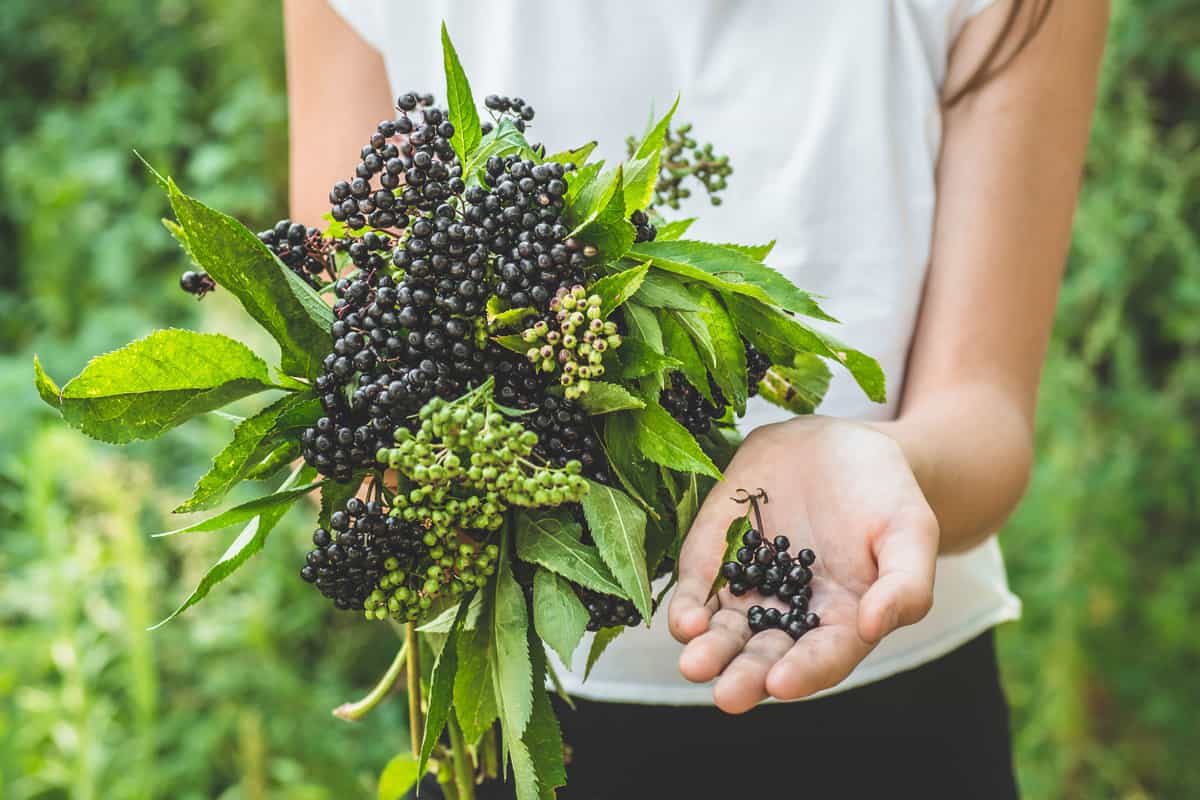
It is generally not recommended for elderberries to be eaten raw. Raw elderberries contain a substance called lectin, which can cause stomach upset and digestive issues when consumed in large amounts.
It is recommended to cook the berries before consumption to avoid these issues. Additionally, unripe elderberries are toxic and should not be eaten at all.
The Takeaway
While planting a single elderberry bush is possible, it is generally recommended to plant at least two different elderberry varieties near each other for optimal fruit production and better yields.
By following these guidelines for elderberry pollination, growers can achieve healthy growth and abundant fruit production in their elderberry plants.
Enjoyed reading this article? You might also be interested in these topics: Crepe Myrtle Bush Vs Tree: How To Shape Yours


